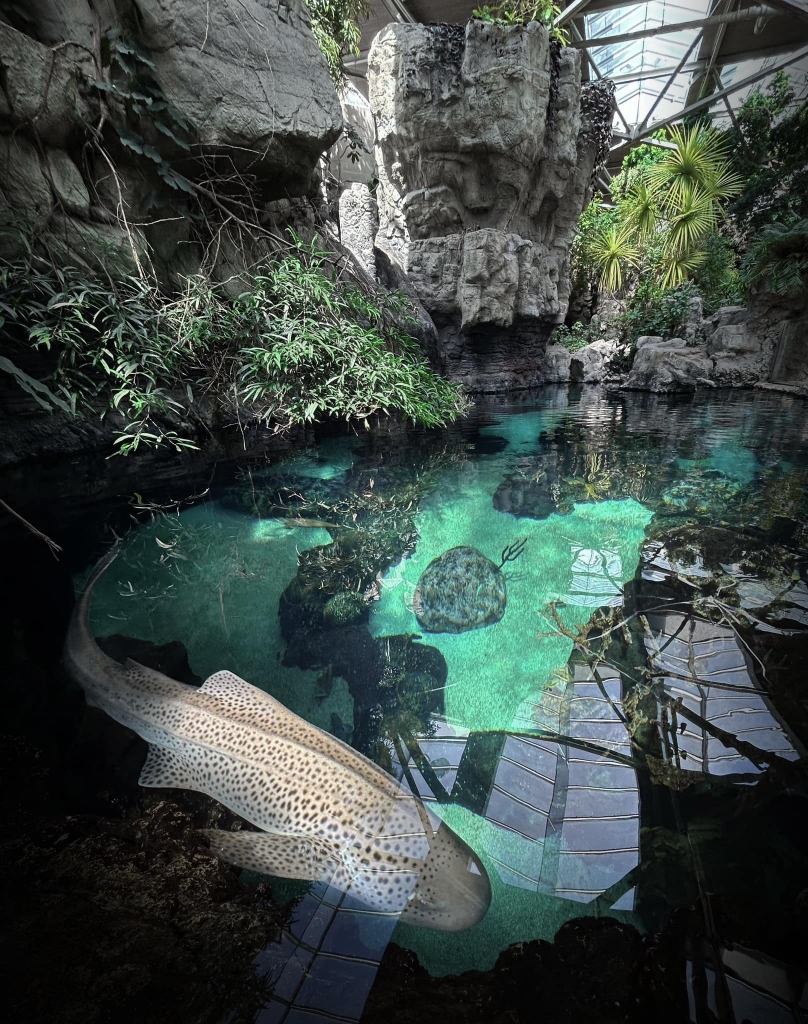Summary of Minnesota Zoo Consensus for a Census: One Way to Save Sharks and Rays:
The Minnesota Zoo is a proud partner of the SAFE (Saving Animals From Extinction) program, which focuses on the conservation of over 1,200 shark and ray species. Abby Tatreau, an Aquarist at the zoo, spearheads the initiative. A significant project within SAFE Shark & Ray is the Chondro Census, designed to unify and simplify population data entry for sharks and rays across global aquariums, aiding researchers. This census focuses on Chondrichthyes, fish with cartilaginous skeletons, like sharks and rays.
Additionally, the Chondro Census collects lab test results to establish normal blood values, essential for veterinary care. This year, blood samples from bamboo sharks in the Minnesota Zoo’s Tropical Reef habitat will be analyzed and shared with partners.
Furthermore, the zoo supports the Sustainable Feed Project, where Tatreau monitors the diet of sharks and rays, emphasizing sustainable seafood sourcing. This effort addresses overfishing, which threatens a third of all shark and ray species, by encouraging environmentally responsible food choices both in zoos and for the public.
- Importance of the SAFE – Saving Animals From Extinction – program
- Role of the Minnesota Zoo and the development of the Chondro Census
- Importance of lab test results and normal blood values for sharks and rays
- Sustainable Feed Project and tracking sustainable seafood sources
- Impact of overfishing on shark and ray populations
The SAFE (Saving Animals From Extinction) initiative is a coordinated effort by zoos and aquariums around the globe to support the conservation of over 1,200 shark and ray species. The Minnesota Zoo, an integral participant in this endeavor, has demonstrated its commitment through various innovative programs, including the pivotal Chondro Census. This article will explore the framework of SAFE, detail the specifics of the Chondro Census, highlight the significance of health monitoring through lab results, and discuss the importance of the Sustainable Feed Project in promoting environmentally responsible practices.
SAFE – Saving Animals From Extinction is a global program designed to aid zoos and aquariums in collaborative conservation efforts. The Minnesota Zoo’s participation not only strengthens local conservation but also contributes globally. Abby Tatreau, the zoo’s representative, emphasizes the critical need for a cohesive data-sharing network. Different institutions have traditionally used various databases, often resulting in disjointed datasets that are challenging to analyze collectively.
The Chondro Census addresses this by streamlining the process. The term ‘chondro’ signifies fish with cartilage skeletons, categorizing sharks, rays, and skates under Chondrichthyes. The census assembles population data from aquariums worldwide into a single, accessible platform, significantly simplifying data entry and analysis for researchers. This harmonized approach encourages more effective monitoring and conservation efforts, which are crucial for managing global shark and ray populations.
The census also gathers important health data. Regular blood samples and the establishment of baseline blood values are essential for assessing the health of sharks and rays in human care. Historically, the lack of a comprehensive data set has posed significant challenges in understanding what constitutes normal blood values for these species. With this initiative, Tatreau and the team will collect blood from bamboo sharks in the Minnesota Zoo’s Tropical Reef habitat. By tagging these animals with transponders, they avoid repeated sampling of the same individuals. This collected data is sent to labs, benefiting not only the Minnesota Zoo but also any institution involved in the care or study of these species.
The Chondro Census is a pivotal part of the larger effort to protect shark and ray species. However, conservation extends beyond data collection. The Sustainable Feed Project focuses on what these animals consume. As an accredited member of the Association of Zoos and Aquariums (AZA), the Minnesota Zoo champions sustainable seafood options. Tatreau’s role involves ensuring the seafood fed to zoo animals is sourced responsibly. Questions about sourcing, capture methods, and utilization guide purchasing decisions. This meticulous attention to sustainability helps reduce the environmental footprint of feeding practices.
The emphasis on sustainable seafood has broader implications. Overfishing is a pressing issue, threatening a third of all shark and ray species with extinction. Thus, sustainable seafood choices made by zoos and aquariums can aid in replenishing natural seafood populations. Public awareness about sustainable choices also contributes significantly. By choosing responsibly sourced seafood, consumers can support conservation efforts indirectly, reinforcing the zoo’s work.
The Minnesota Zoo’s efforts reflect a comprehensive approach to conservation. The effectiveness of the Chondro Census in collating data and the gathering of crucial blood values epitomize how coordinated action and data-sharing are vital. These efforts help maintain the health and longevity of captive shark and ray populations, which correlatively support conservation strategies for their wild counterparts.
By participating in the SAFE – Saving Animals From Extinction program, the Minnesota Zoo contributes substantially to the protection and conservation of sharks and rays. These partnerships and projects underscore the necessity of a unified approach to wildlife conservation, reflecting a deep-seated commitment to preserving biodiversity. The efforts of institutions like the Minnesota Zoo serve not only to protect these species but also to educate and inspire future generations about the importance of conservation.
In a world facing significant biodiversity loss, the commitment seen through programs like SAFE, and initiatives such as the Chondro Census and the Sustainable Feed Project are vital. They showcase the proactive steps necessary to mitigate the threats facing shark and ray populations. These efforts provide hope that through collaboration, research, and sustainable practices, we can safeguard these incredible animals for the future.


